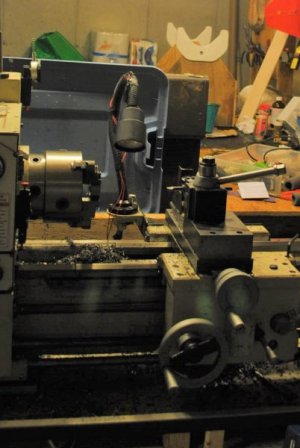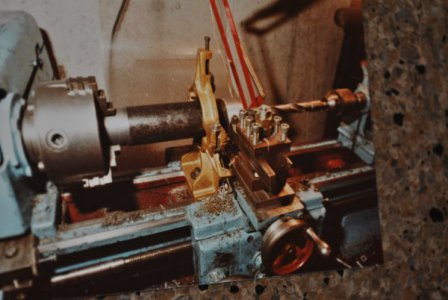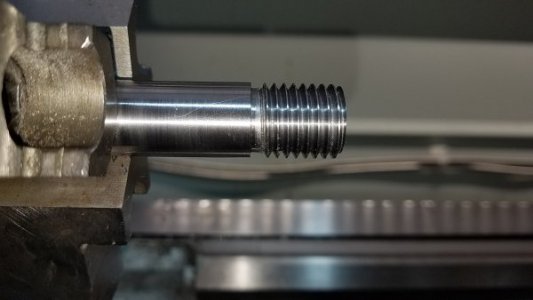... but now I am wondering why to use the compound advance in the first place if the result of using the cross feed works so well.
Seeking comments.
You are going to find that in softer materials using smaller diameters to cut smaller thread pitches, 20 tpi or less, feeding straight in with the cross slide is fine. The amount of cutting edge engaged is small, heat generation and chip evacuation is not a major issue and the thread form usually turns out fine. Tool life is also good under these conditions.
In harder materials and larger diameters, especially if you use carbide inserts, then feeding in with the compound is favored. The key reasons this is preferred is that it limits the amount of edge contact sustained by the tool. This reduces cutting forces, heat production and enhances chip clearance. Because of reduced edge contact, deflection is also reduced so accuracy is more easily obtained.
A threading tool is a form tool. On smaller threads, especially in softer materials, cutting forces are easily managed but in larger threads the amount of edge contact does matter. You are essentially cutting with a zero rake form tool so ALL the cutting forces are on the edges. Feeding straight in with a form tool is a recipe for chatter, deflection and poor finishes on a manual lathe cutting deep threads, which is why using the compound for larger threads is favored.
Many of us use inserted carbide threading tools. The geometry of these inserts is fixed, although you can alter that geometry by using different anvils under the insert to match the helix angle of the thread. When using inserts, I have found that feeding with the compound tends to work better because I cannot alter the geometry of the insert so I have to minimize cutting forces by minimizing edge contact.
When using a HSS threading tool I can increase the relief angles to reduce forces so I can cut with either the cross slide or compound without too much trouble. You might not think the relief angles on a tool matters but I have found that a relief angle of 12 degrees may chatter, while 15 degrees will not.
Cutting forces always matters and on a threading tool, the only controls you have are your relief angles, your approach angle and depth of cut; speed and feed is what it is. So, choose your tools well and use them to your advantage.





